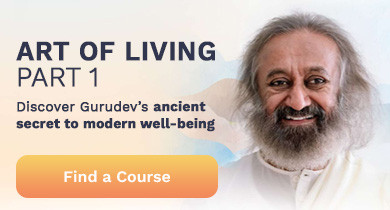For more than a decade now, every 29th of September has been celebrated as ‘World Heart Day’ to raise awareness against heart related diseases. However, the latest survey conducted by a private company with a sample size of more than 1,12,000 over urban centers in India does not portray an encouraging picture of Indian’s heart. It says, 70% urban Indians are having risk of cardiovascular disease (CVD). 75% men between 30-34 have CVD risk followed by a similar percentage of men in 35-39 age group, while among females 66% women are at CVD risk. 55% women in their 30s are at CVD risk. The survey mentions following factors responsible for CVD risk:
- Diabetes/ Smoking / Cholesterol reading of 200 or more.
- HDL (High Density Lipoprotein or good Cholesterol) reading of 50mg/dL or less.
- BMI (Body Mass Index) of 23 or more (Overweight).
- BP (Blood Pressure) reading of 140mmHG or more.
Earlier this year, Apollo Hospitals designed and IMRV carried out a survey on heart diseases in India which covered 10 cities. The survey reveals that Indians are more prone to heart diseases due to their smaller calibred arteries which are mostly responsible for early deposition of lipids inside arteries and causing Atherosclerosis. While the size of the aorta for an Indian is 1-1.25mm, it is 2.5 to 3mm for those living in western countries. Thus it is clear that we Indians are genetically prone to heart diseases. The survey points out following reasons for making Indians more prone to Heart Diseases:
- Poor Stress Management
- Very little or no exercise
- Sedentary Lifestyle
- Consumption of Fat-rich food.
It also reveals that one-fifth of the deaths in India are from coronary heart disease. But by 2020, it will account for one third and majority of them will be youngsters below the age of 40. WHO has identified India as the country which will have the largest cardio-vascular disease burden in the world by 2020. Dr. Bansal, head of Cardiology department at JJ Hospital says, “We Indians have bad genetics and we worsen it with our lifestyle that is becoming increasingly westernized and the diet is becoming too high in sodium and fat.” But he added that it’s not too late to change the trend. Countries like Sweden have recorded lowered heart problems because of stringent efforts both by the state and individuals. He said that prevention of heart disease is as simple as consuming only cow’s milk, avoiding yolk of the egg, sticking to lean meat and eating many colorful fruits and vegetables. He opined “Indians have a wrong notion that only walks in the morning helps. Brisk walking at any time of the day is good exercise. People should at least take up yoga.
Benefits of Yoga on Heart Disease:
A project carried for one year on 71 heart patients in a study group and 42 patients in a control group by Santacruz Yoga institute, Mumbai in 2004 with objectives of evaluating role of lifestyle modification on yoga techniques, stress management and dietary modification in retardation of coronary artery disease concluded that yoga based lifestyle modifications helped in regression of coronary lesions and in improving myocardial perfusion. The study group patients were given a family based yoga program which included control of risk factors, dietary modifications and stress management for a period of one year. The result of the project after one year found:
- Reduction of total cholesterol by 23.3% in study group patients as compared to 4.4% in control group.
- Reduction of serum LDL cholesterol by 26% in study group patients as compared to 2.6% in the control group.
- Regression of heart disease by 43.7% of study group patients vs. 31% control group on MPI and 70.4% of study group vs. 28% of control group on angiography.
- Arrest of progression
A good preventive program suggested by Dr P Namjoshi, Preventive Cardiologist, to tackle heart diseases includes:
- Education about the heart.
- Effective Stress Management
- A healthy diet - high in antioxidants, low in fat and carbohydrates and high in fiber and quality protein.
- Yoga for improved blood circulation and pranayama for better breathing.
- Meditation for mental relaxation and rejuvenation.
- Exercises to improve collateral circulation and an annual heart check up.
Yoga assists in restoring equilibrium to the body and mind so that good health can flourish. It is particularly effective at dealing with stress-related disorders, because it works at both a physical and mental level. The asanas (body postures) works on the physical body and the meditation practices help to control and calm of the mind. Regular yoga practice helps not only in preventing heart diseases but also assists in reducing the afflictions once heart disease is diagnosed. The benefits of regular yoga practices are many. The same has been understood by the western countries. Even though yoga was invented in India, it is spreading rapidly in those countries in comparison to India. The estimated numbers of people in United Sates of America who practice yoga are sometimes as high as 20 million and it is a $6 billion industry in that country. Now the above surveys and available solution should make the Indians wake up and embrace Yoga for better heart and health.
By Arun Kumar Ghosh (Sri Sri Yoga Teacher)





























